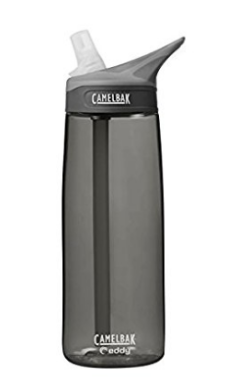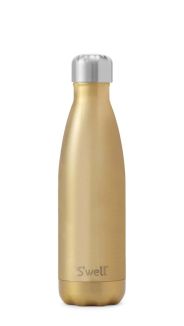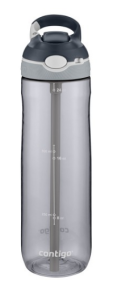I was stuck with what to write this post on, and then I realized that I haven’t yet written about the most simple aspect of going zero waste- Reusable water bottles.
I learned a few weeks ago that my high school, with almost 3,000 students, makes $200,000 a year on selling just $1 Poland Spring Water bottles. Some students buy multiple a day, even though there are water bottle refilling stations in every hallway in the school. I have a plethora of reusable water bottles at home, and the thought of using a plastic single-use water bottle hasn’t reached my mind in months. If I forget a water bottle at home, I probably will go the whole school day thirsty, not only because I don’t want to buy a single use water bottle, but also because I don’t bring the money to school, so I am literally unable to. I think this is the best way to stop using single use water bottles on a day to day basis, force yourself not to until you remember to bring a reusable water bottle.
I will give recomendations of water bottles that I use or have used in the past- what I liked about them, what I don’t like about them, and which is my favorite.
Camelbak

I purchased the Camelbak Eddy a little over a year ago in the color Charcoal. I know people who rave about these water bottles, but this one goes on the bottom of my list.
About six months into semi-daily use, the straw started to mold, and the water bottle would leak all over my car and backpack. Persistent washing, by hand and through the dishwasher, didn’t work either. After only six months, I had to throw it out. I considered their Lifetime Warranty program, but after reading into it, found out that it only applies to faulty products from purchase. I had to recycle it. Won’t be buying again!
S’well

The store I work at sells S’wells, and ever since our first shipment around Christmas time, it has been a best-seller. What I think attracts people to S’wells are the variety of beautiful designs, and the fact that its insulation keeps cold beverages cold for 24 hours and hot beverages hot for 12. I’ve had two S’well bottles over the course of three years (I lost the first one) and can honestly say that this is true. I used to make the mistake of putting hot tea in my S’well, expecting it to cool down enough to drink it within the next hour, but it wouldn’t get to a less-than scorching hot temperature for around five hours. My only problem with the S’well is that like many other reusable water bottles, it isn’t very compatible with lip glosses / lipsticks. The makeup sticks to the mouth of the bottle, which in turn makes it require more washes than other reusable bottles I have used.
Contigo

The Contigo water bottle is by far my favorite, and there are a few reasons why. First, it was cheaper than the other water bottles. The S’well costs $35, Camelbak was $15, and the Contigo was only $8! I bought it at the B&N Starbucks Cafe in Barnes and Noble, and since I am a Barnes and Noble member, I got a discount. But the price doesn’t reflect the quality of the product. The feature that I found useful that isn’t present in the others is the lock. To ensure it doesn’t leak, there is a lock on the side, which I find myself using a lot more often than I originally thought. After the constant leaking of the Camelbak, I found this extra security a blessing. Another aspect that I liked was the straw. The straw isn’t one that you just push into the holder, like the Camelbak, but you actually have to twist it to lock it. With my Camelbak, I found that whenever I had lemon water or ice water that the solids in the container would push the straw out of the holder, which also always happened when I was in the middle of driving, not ideal. Lastly, I really love the spout on the Contigo. With the Camelnbak, you have to bite down on the spout to get the water out, which was annoying and also wasn’t healthy for me because I have a jaw disorder called TMJ, where essentially the joints in my jaw get inflamed with too much chewing, a really annoying and painful problem that I can’t fix, but I can try to mitigate with less chewing, and this didn’t help it. I also found the shape of the Contigo is better shaped to fit mouths, which I enjoyed.
The Contigo water bottle has turned into my daily use water bottle. I am able to place lemons and ice in the water bottle without the straw popping out, can lock it to prevent it from spilling, and it is also cheap and 24 oz! That means I only have to drink 5 to reach a gallon of water a day! Woo!
I hope some of you who are looking for the right water bottle for them found this review helpful. I know I only included three, but where I live, these three brands are the most popular. If you decide to try these out, or other reusable water bottles out, and don’t like it, you can give it to a friend or recycle them! All of these water bottles are recyclable.
…
“It is better to light a candle than to curse the darkness.” -Eleanor Roosevelt.




